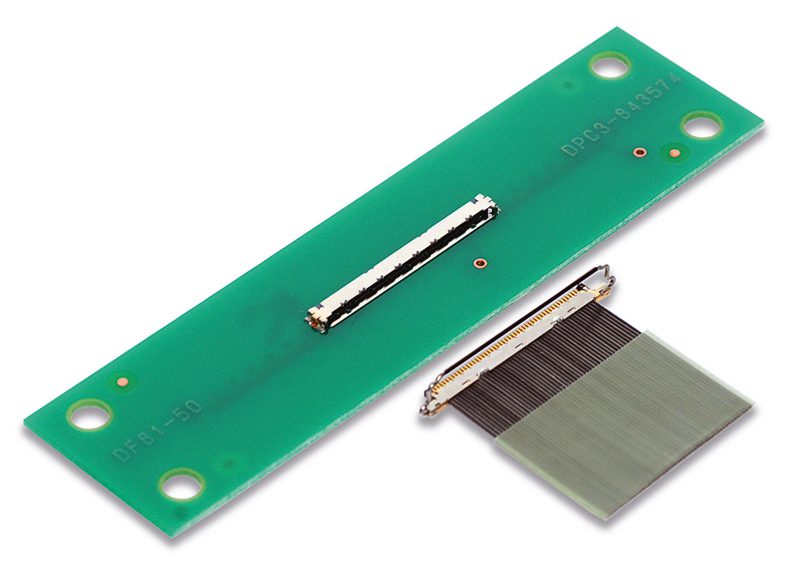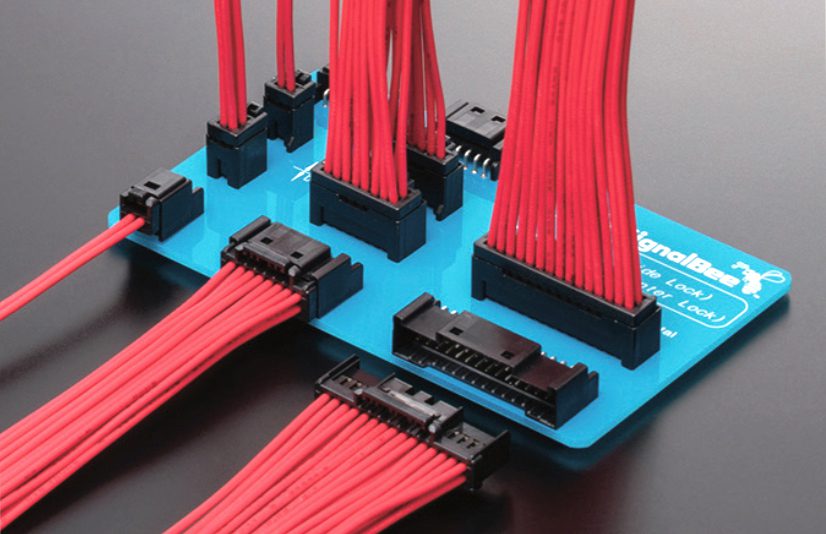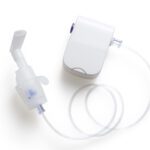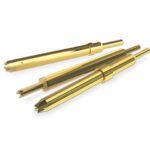Five Connectivity Considerations for Ultrasound Imaging Applications
To ensure optimal ultrasound performance over long equipment lifetimes in rigorous operating environments, design engineers should consider five primary characteristics when specifying medical connectors.
Sonography, better known as ultrasound imaging, is one of the most utilized and beneficial medical diagnostic imaging techniques. Ultrasound imaging technology has been used to help physicians evaluate, diagnose, and treat a wide range of medical conditions since the 1950s and has steadily improved in capabilities, particularly since the arrival of digitalization and high-speed communications. Recent advancements have significantly improved image resolution, enabling high-quality 3D- and 4D-imaging techniques. They have helped to reduce the size of ultrasound equipment, enabling portability and the development of wearable equipment. All these developments are made possible by smaller, more robust, higher-density, higher-bandwidth, and higher-speed connectors.

Application background
Ultrasound imaging technologies use high-frequency sound waves emitted by a small probe called a transducer, typically placed directly on the skin or inside the body of a patient, to generate diagnostic images of patients’ internal body structures. Ultrasounds can generate images of internal structures, ranging from soft tissue and blood vessels to organs, to allow doctors to more accurately diagnose and treat a variety of medical conditions. Traditional ultrasounds display the interior features of flat, thin sections of the body. 3D ultrasounds convert the sound waves into 3D images to reveal more detailed physical features. A 3D ultrasound in motion is referred to as a 4D ultrasound and examples include watching a heartbeat or blood flow through blood vessels in real time.
The key to these capabilities is connectivity technology. Ultrasound probes rely on advanced connectors and cable assemblies to emit high-frequency sound waves, receive the sound waves that bounce back from internal body structures, and transmit them to a computer capable of translating them into an image. The connectivity components specified for ultrasound design are of the utmost importance. To ensure optimal ultrasound performance over long equipment lifetimes in rigorous medical environments, design engineers should consider five primary connectivity characteristics: high-speed performance, shielding efficacy, miniaturization, ease of assembly, and long-lifetime reliability.
1. High-speed performance
The advanced 3D- and 4D-ultrasound imaging technologies predominantly in use today require high-speed, high-bandwidth data transmission capabilities. To this end, many employ micro-coaxial connectors and cable assemblies, which are suitable for use in video applications with moderate- to high-frequency performance and high-data-rate demands. Micro-coaxial connectors support high data rates using communications protocols including eDP 1.3, USB 3.0, and SATA 3.0.

Hirose’s DF81 Series horizontal-mating, board-to-micro-coaxial-cable connectors have a compact form factor with an extremely tight 0.4mm pitch, robust shielding mechanisms for protection against EMI and RFI, and a positive locking structure for secure connections. They support data rates up to 5.4 Gb/s, which makes them suitable for use in 3D- and 4D-ultrasound equipment.
Ultrasound equipment can also achieve high-data-rate performance using high-speed differential-pair connectors. Differential signaling techniques transmit the same electrical signal as a differential pair of complementary signals, each with its own conductor, that must then be matched to prevent a phase shift that could introduce interference or signal degradation.
Hybrid board-to-board connectors that incorporate both high-speed signal contacts and power contacts in a single housing offer several significant design advantages and are widely employed in newer ultrasound equipment designs. Combining signal and power in one connector simplifies the design process by reducing the component count, saving valuable board space, and reducing the total number of pins required to achieve the same performance.

Hirose’s FX23 Series hybrid signal and power connectors support high-speed transmission up to 8 Gb/s and have four 3A power contacts located on each side of the connector housing. They also eliminate mechanical stress at the SMT leads, reduce assembly time and costs, and enhance ease of use, especially when mating multiple connectors on the same PCB.
2. Shielding efficacy
High-speed input/output (I/O) connectors must provide excellent shielding against electromagnetic interference (EMI) and radio-frequency interference (RFI) to remain perfectly matched and ensure high-signal-integrity transmission in even “noisy,” signal-crowded environments. Shielding efficacy is particularly important in ultrasound imaging machines and other medical equipment used to relay critical patient data in clinical environments that are often filled with electronics. The high-speed I/O connectors designed into ultrasound imaging equipment often utilize metal shielding mechanisms to protect the signal from the ill effects of EMI and RFI and generate accurate images. These connectors can also utilize a specialized contact design that employs a ground contact between adjacent differential pairs to reduce crosstalk and, in addition, provides superior impedance matching and low insertion loss, even with short rise times.
3. Miniaturization
Miniaturization and portability are two of the most prevalent trends in the medical market. In response, medical electronics, including ultrasound equipment, are being designed to take up less space and be more mobile. Many enabling components must be downsized to achieve significant product size reductions, including connectors used in miniaturized designs.
Years ago, designers were forced to weigh application requirements against potential trade-offs between size, performance, and robustness when choosing a high-speed I/O connector solution. Now, smaller size does not necessarily equate to lower data rates and increased fragility. Micro-coaxial connectors can provide significant space savings with contact pitches down to 0.4 mm and a low-profile mated heights down to 1.5 mm in single-row layouts and, although small in stature, have a durable plug design and dependable locking mechanism that achieve highly reliable electrical and mechanical connections capable of high-speed performance.

Designed specifically for use in portable ultrasound scanning interfaces, Hirose’s miniature, high-density EX Series connectors are available with up to 280 contacts on a tight 0.8 mm pitch. Additional features include enhanced grounding structures, four-step displaced contact points for lower insertion forces, floating locators for mounting efficiency, 90° and 180° configurations, and optional shielding.
4. Ease of assembly
Board-to-board connectors with a floating contact mechanism can absorb up to ±0.6 mm or more of mating misalignment in the X- and Y-axis directions, offering a degree of play between the contacts to ease and simplify the assembly process. By self-centering in both the X- and Y-axis directions, the floating structure ensures safe and proper mating, reduces the stress on mounted parts, mitigates the risk of solder cracking, and enhances reliability. They are also compatible with pin-in-hole intrusive reflow processes, which reduces the amount of manual soldering labor required for the metal posts. When combined with the floating contact, they solve the problem of solder joints coming loose in portable medical equipment. Floating-contact connectors are also particularly convenient when mating multiple connectors on the same printed circuit board and can contribute to significant assembly time and cost savings.
5. Long-lifetime reliability
Ultrasound imaging equipment has a long product lifecycle and requires rugged, high-reliability connectivity components rated for many mating cycles. A wide range of design attributes can increase the operating life of a connector. Dual-beam contacts, for instance, simultaneously reduce resonance and improve resistance to shock and vibration, while locking mechanisms designed to provide clear audible and tactile confirmation of proper mating prevent accidental pin damage. Both methods are commonly employed in connectors specified for use in portable ultrasound imaging equipment.

Hirose’s DF51K Series SignalBee™ wire-to-board connectors have a 2.0mm pitch and a user-friendly, space-saving center-lock that supports high-density mounting, prevent reverse mating, and provides secure, reliable connections with audible and tactile mating confirmation. They are available in multiple widths and several configurations.
Subject to market trends toward ever-better accuracy, improved convenience, and increasing miniaturization and portability, today’s medical imaging equipment requirements continue to drive I/O connector technologies to support faster, higher-bandwidth signal transmission in smaller, faster, and more rugged packages with effective shielding and high-mating-cycle durability. A number of I/O connector technologies can meet these stringent requirements. For help weighing the various advantages and disadvantages of each technology to ensure the right connector solution for a given ultrasound application, medical imaging equipment designers should consult with a trusted connector supplier.
Like this article? Check out our other Connector Basics, and high reliability articles, our Medical Market Page, and our 2021 and 2020 Article Archives.
- Five Connectivity Considerations for Ultrasound Imaging Applications - August 31, 2021





